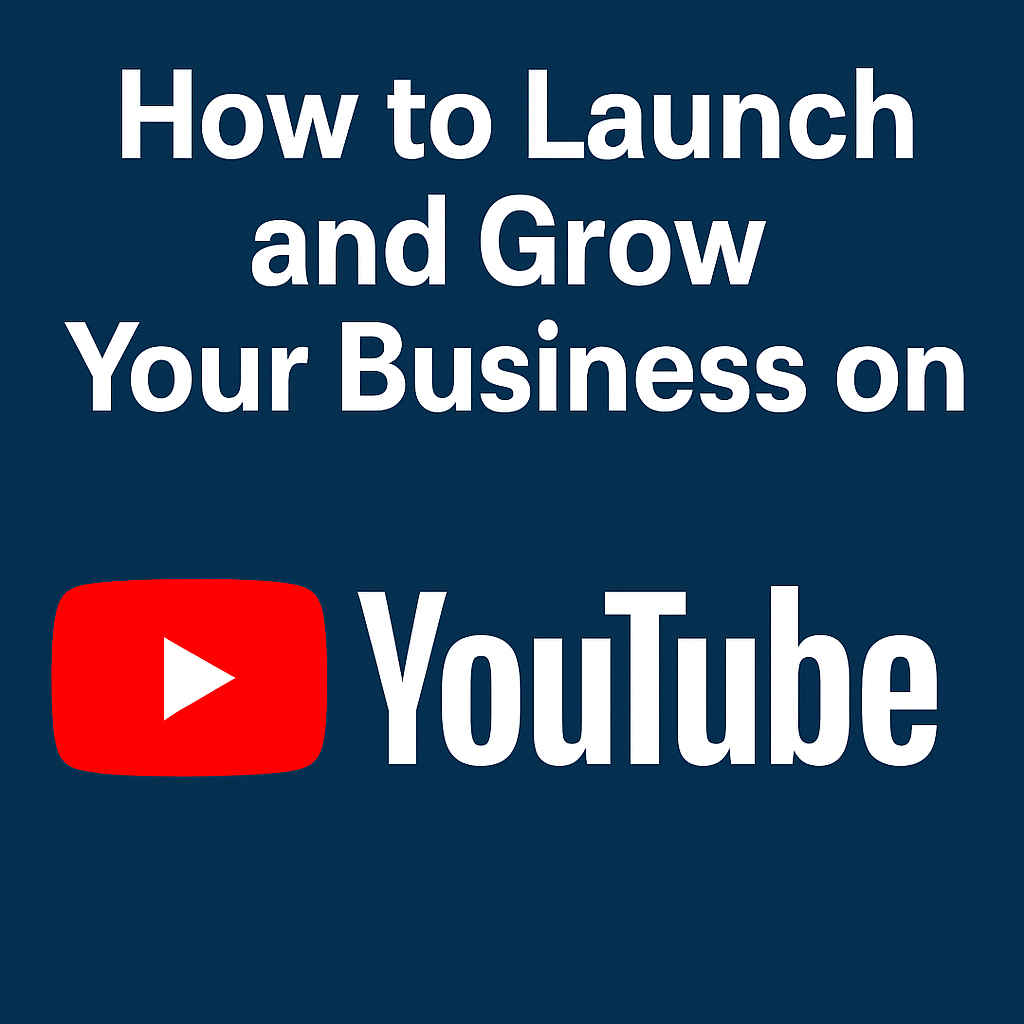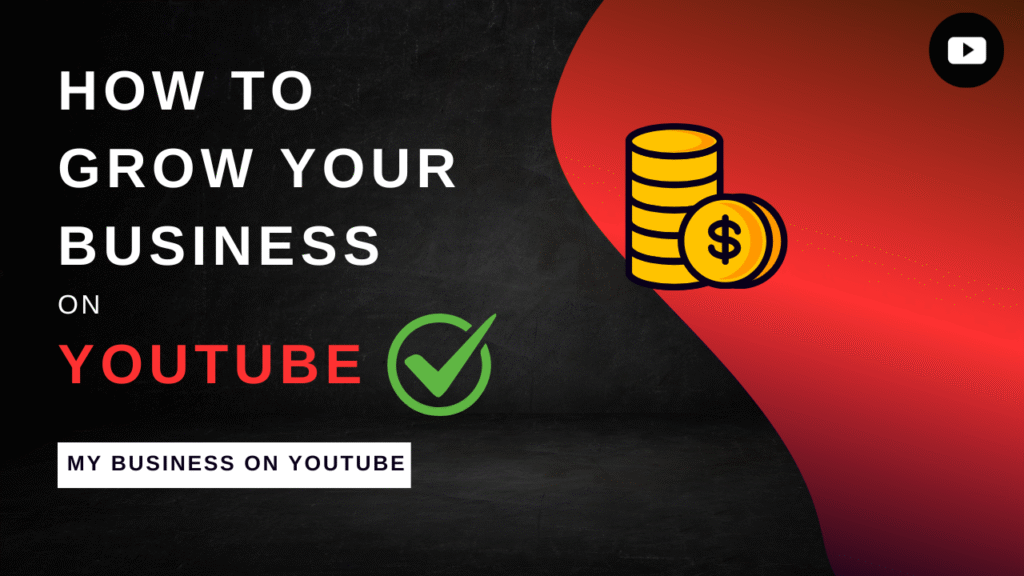How to Launch and Grow Your Business on YouTube
Why YouTube Is a Game-Changer for Business Growth in 2025
YouTube’s massive audience and versatile content formats make it an ideal platform for businesses of all sizes. Unlike other social media platforms, YouTube’s evergreen content can continue to attract views and drive traffic long after posting, offering long-term value.
Its algorithm prioritizes relevance and engagement, giving new channels a chance to compete with established ones. By mastering how to grow a YouTube channel, businesses can showcase products, share expertise, and build authentic connections with customers.
Additionally, YouTube’s integration with Google’s ecosystem enhances its SEO potential, making it easier for your content to appear in search results. Whether you’re in e-commerce, coaching, or creative services, growing a successful business on YouTube is achievable with the right strategy.
Let’s dive into the step-by-step process to start and grow a successful business on YouTube.
Step-by-Step Guide to Launching and Growing Your Business on YouTube
1. Set Up a Professional YouTube Channel
To launch your business on YouTube, start by creating a professional YouTube channel tailored for your brand. Here’s how to get started:
- Create a Google Account: Use a business email to sign up for a Google account, which you’ll use to access YouTube.
- Set Up Your Channel: Go to YouTube, click “Create a Channel,” and choose the “Business or Brand” option. Name your channel after your business for brand consistency.
- Optimize Your Profile:
- Channel Art: Design a visually appealing banner (2560×1440 pixels) that reflects your brand’s identity.
- Profile Picture: Use your logo or a recognisable image associated with your business.
- About Section: Write a concise description of your business, including keywords like how to grow a business on YouTube and a link to your website.
- Enable Customization: Organize your channel with playlists and sections to make content easy to navigate.
Pro Tip: Add a compelling channel trailer (30–60 seconds) that introduces your brand and encourages viewers to subscribe. This is critical for how to start a business on YouTube.
2. Define Your Niche and Target Audience
- Identify Your Expertise: What unique value does your business offer? For example, a fitness brand might focus on home workouts, while a tech company could create gadget reviews.
- Research Your Audience: Analyze demographics (age, location, interests) and pain points. Use tools like Google Trends or YouTube Analytics to understand what your audience searches for.
- Study Competitors: Look at successful channels in your niche to identify gaps you can fill with unique content.
3. Create High-Quality, Engaging Content
- Invest in Equipment: Start with a decent camera (or smartphone), microphone, and lighting to ensure professional-looking videos. Tools like the Rode VideoMic or Ring Light are budget-friendly options.
- Plan Your Content: Create a content calendar with a mix of video types, such as:
- Tutorials/How-To Videos: Teach your audience something valuable (e.g., “How to Style a Capsule Wardrobe” for a fashion brand).
- Product Demos: Showcase how your product works or solves a problem.
- Behind-the-Scenes: Share your business journey to build authenticity.
- Vlogs: Offer personal insights or day-in-the-life content to connect with viewers.
- Educational Content: Share industry insights to position yourself as an expert.
- Optimize Video Length: Aim for 8–15 minutes for most content, as longer videos can increase watch time, a key ranking factor.
4. Master YouTube SEO
- Keyword Research: Use tools like Google Keyword Planner, TubeBuddy, or vidIQ to find high-traffic, low-competition keywords like how to start a business on YouTube or grow your business on YouTube.
- Optimize Titles: Create compelling, keyword-rich titles (e.g., “How to Grow Your Business on YouTube in 2025: 10 Proven Strategies”).
- Write Detailed Descriptions: Include a 200–300-word description with keywords, a summary of the video, and links to your website or social media.
- Use Tags: Add relevant tags to help YouTube categorize your video.
- Create Eye-Catching Thumbnails: Design custom thumbnails with bold colors, clear text, and expressive images to boost click-through rates (CTR).
5. Post Consistently and Strategically
Consistency is critical for how to start and grow a business on YouTube. Regular uploads signal to the algorithm that your channel is active, increasing your chances of being recommended. Here’s how to plan your posting schedule:
- Frequency: Aim for 1–2 videos per week to start. As you grow, increase to 3–4 if possible.
- Timing: Post when your audience is most active. Use YouTube Analytics to find optimal times, but general best times (2025) include:
- Weekdays: 2–4 PM or 7–9 PM (local time for your audience).
- Weekends: 10 AM–2 PM.
- Batch Content: Record and edit multiple videos at once to maintain consistency.
Pro Tip: Create playlists to organise related videos, encouraging viewers to watch more contents and increase watch time.
6. Engage with Your Audience
- Respond to Comments: Reply to viewer comments to build a loyal community and encourage more interaction.
- Use CTAs: End videos with clear calls-to-action, like “Subscribe for more tips!” or “Comment your favorite strategy below!”
- Pin Comments: Pin a comment with a question to spark discussion (e.g., “What’s your biggest business challenge?”).
- Go Live: Host live streams to connect with viewers in real-time, answer questions, or showcase products.
- Community Tab: Share polls, updates, or behind-the-scenes content to keep your audience engaged between uploads.
7. Leverage YouTube Ads
- Skippable In-Stream Ads: Play before or during videos, with an option to skip after 5 seconds.
- Non-Skippable In-Stream Ads: Short ads (15–20 seconds) that viewers must watch.
- Discovery Ads: Appear in search results or related videos, promoting your content.
- Bumper Ads: 6-second ads ideal for brand awareness.
- Keep ads concise and engaging, with a strong hook in the first 5 seconds.
- Target specific audiences based on demographics, interests, or search behavior.
- Use compelling CTAs, like “Shop Now” or “Learn More.”

8. Collaborate with Other Creators
- Find Compatible Creators: Look for channels with a similar or complementary audience. Use YouTube’s search bar or tools like Social Blade to identify potential partners.
- Propose Value: Offer mutual benefits, such as cross-promotion, product sponsorships, or co-created content.
- Create Joint Content: Film interviews, challenges, or tutorials together to leverage both audiences.
9. Monetize Your Channel
- Enable Ads: Earn revenue from ads displayed on your videos.
- Offer Channel Memberships: Provide exclusive perks (e.g., badges, emojis) for paid subscribers.
- Sell Merchandise: Use YouTube’s Merch Shelf to promote branded products.
- Promote Affiliate Links: Share affiliate links in video descriptions to earn commissions.
- Drive Traffic to Your Website: Use videos to funnel viewers to your e-commerce store or services.
10. Analyze and Refine Your Strategy
- Watch Time: Measure how long viewers watch your videos to gauge engagement.
- Audience Retention: Identify where viewers drop off to improve content pacing.
- Traffic Sources: See where views come from (e.g., search, suggested videos, or external links).
- Click-Through Rate (CTR): Monitor thumbnail and title performance to optimize for higher clicks.
Common Mistakes to Avoid When Growing Your Business on YouTube
- Ignoring SEO: Failing to optimize titles, descriptions, and tags limits discoverability.
- Inconsistent Posting: Sporadic uploads can stall growth and reduce algorithm favorability.
- Overly Salesy Content: Pushy sales pitches alienate viewers. Focus on value-driven content.
- Neglecting Engagement: Ignoring comments or failing to interact with viewers hurts community-building efforts.
- Poor Video Quality: Low-quality audio or visuals can deter viewers from subscribing.
Advanced Strategies for Scaling Your YouTube Business
- Create a Content Series: Develop recurring series (e.g., “Weekly Business Tips”) to keep viewers coming back.
- Repurpose Content: Turn long-form YouTube videos into shorts, blog posts, or social media clips to maximize reach.
- Use End Screens and Cards: Add interactive elements to promote other videos or your website.
- Leverage YouTube Shorts: Create 60-second vertical videos to tap into the Shorts algorithm and attract new viewers.
- Cross-Promote on Other Platforms: Share your YouTube content on X, Instagram, or TikTok to drive traffic.
Case Studies: Businesses That Grew Successfully on YouTube
- Gwrite: An Advertising Agency and Consulting Company that leveraged YouTube to attract clients from across the globe.
- Gymshark: This fitness apparel brand used YouTube to share workout tutorials and athlete vlogs, building a loyal community and driving millions in sales.
- Tasty: BuzzFeed’s food channel leveraged recipe videos to become a YouTube sensation, leading to cookware and meal kit partnerships.
- Anker: The tech accessory brand used product demos and reviews to establish trust, contributing to its global expansion.
These examples highlight the power of how to grow a business on YouTube through strategic content and audience engagement.
Conclusion: Your Path to YouTube Success
Avoid common pitfalls, experiment with new strategies, and leverage YouTube’s analytics to refine your approach over time.
Call to Action: Ready to grow your business on YouTube?
Create your channel, post your first video, and share it with us in the comments!
What’s your niche, and how will you make your content stand out?

